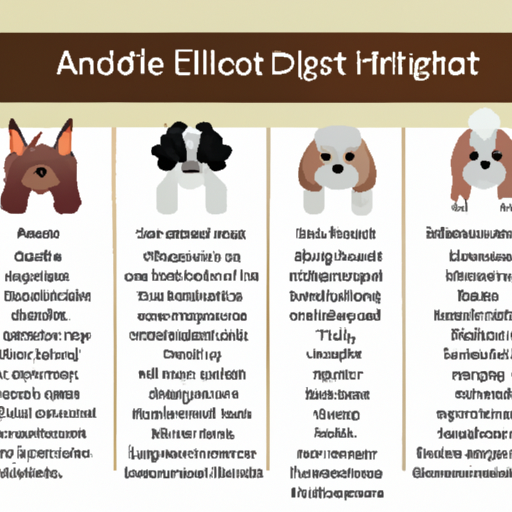Dogs are our faithful companions, but for some, the joy of owning a dog is overshadowed by the constant sneezing and itchy eyes. If you’re one of those affected, hypoallergenic dogs might be your answer.
What Does Hypoallergenic Mean?
The term “hypoallergenic” refers to something that has a decreased tendency to cause allergies. Hypo means less, not none. Hypoallergenic dogs will still produce allergens, but because of their coat type, absence of fur, or lessened dander, they typically produce fewer allergens than other dogs.
Top Five Hypoallergenic Dogs
Here’s a list of five hypoallergenic dog breeds that are known to cause less allergic reactions:
- Poodles: Poodles, including miniature and toy varieties, are known for their intelligence and their curly hair, which is more like human hair than fur.
- Bichon Frises: These small dogs are known for their curly coats which help to minimize dander.
- Schnauzers: Schnauzers come in three sizes (miniature, standard, and giant) and all are considered hypoallergenic due to their double coats.
- Portuguese Water Dogs: These dogs have a water-resistant coat that produces less dander.
- Maltese: These dogs have long, silky hair that sheds very little, reducing the distribution of dander.
| Breed | Hair Type | Size |
|---|---|---|
| Poodle | Curly | Miniature to Large |
| Bichon Frise | Curly | Small |
| Schnauzer | Double Coat | Miniature to Large |
| Portuguese Water Dog | Water-resistant | Medium |
| Maltese | Long, Silky | Small |
Caring for Hypoallergenic Dogs
Even though hypoallergenic dogs are less likely to cause an allergic reaction, they still require regular grooming to keep their coats in top condition.
- Bathing: Regular baths can help to reduce the amount of dander on a dog’s skin. Use a mild, hypoallergenic dog shampoo to avoid skin irritation.
- Brushing: Regular brushing can help to remove dead hair and skin, reducing the amount of dander.
- Professional Grooming: Some breeds require regular haircuts or special grooming techniques to keep their coats healthy and manageable.
Living with Hypoallergenic Dogs
Living with a hypoallergenic dog can make a significant difference in your comfort level, but it’s important to remember that no dog is truly hypoallergenic. It’s always best to spend some time with a breed before bringing one home to ensure you don’t have an allergic reaction.
Frequently Asked Questions
Q: Are hypoallergenic dogs completely allergen-free?
A: No. Hypoallergenic dogs produce fewer allergens, but they are not completely allergen-free.
Q: Can I still have an allergic reaction to a hypoallergenic dog?
A: Yes. Everyone’s allergies are different, and what causes a reaction in one person may not in another.
Q: How can I reduce allergens in my home?
A: Regular cleaning, air purifiers, and keeping pets out of certain areas (like bedrooms) can help reduce allergens.
Remember, you’re not just a caregiver to your dog, but you also need to care for yourself. By choosing a hypoallergenic breed, you’re making a wise choice for the health and happiness of everyone in your home.



